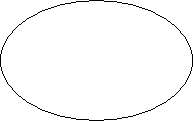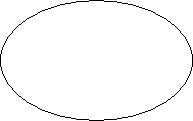|
|
|
CHAPTER 21: MEIOSIS & SEXUAL REPRODUCTION
21-1:
MEIOSIS
Sexual
Reproduction:
Asexual Reproduction
|
Sexual
Reproduction |
|
1
parent |
|
|
|
Offspring
genetically different from parents |
|
Gametes
not needed |
|
|
|
Gametes
formed by meiosis à new individuals form by joining of gametes |
Fertilization:
Zygote:
Egg (n) + Sperm (n) = Zygote (2n)
![]()
![]()

Somatic Cells
|
Gametes
(Sex Cells) |
|
Body
cells |
|
|
|
½
the number of chromosomes as body cells (___________) |
|
|
__________,
or Monoploid, “___” chromosomes |
|
Chromosomes
exist in pairs (2 of each kind – 1 from each parent) |
|
|
|
Produced
by meiosis |
A.
Prophase I
·
·
·
·
·
·



B.
Metaphase I
·

C.
Anaphase I
·
·

D.
Telophase I
·
·
·

E.
Prophase II
·
·


F.
Metaphase II
·


G.
Anaphase II
·
·
·


·
·
·




Mitosis |
Meiosis |
|
|
|
|
|
|
|
|
|
|
|
|
|
|
|
|
|
|
|
|
|
|
|
|
|
|
|
|
|
|
·
Chromosomes
are a ___________________ information
·
Consist
of one long strand of _____wrapped around __________________________
·
Each
chromosome contains ______________________
Chromatids –
Centromere –
·
You have
___________ of chromosomes (46 total), “___________________ Chromosomes”
·
In each
pair, one chromosome is from your __________, one from your ___________
Karyotype –
Chromosomes are ____________ under the ____________,
a ____________ is taken of the cell, and ________________
________________________________________________ on a “karyotype” form.
Autosomes – Chromosome _______________. They contain all of
the __________ that determine who you are. ____________________________.
Sex Chromosomes
– Chromosome ___________ (__, __). These
chromosomes _______________________.
Notation for Normal __________ Karyotype =
___________
Notation for Normal __________ Karyotype =
___________
______ of a child is determined by the ___________!
(mom always gives X, dad gives X or Y)
KARYOTYPE ¯
Is this a male or female?
1.
Down Syndrome (Trisomy 21) 47,XX+21 or 47,XY+21
·
Have an
extra chromosome #____
·
Phenotype
(_____________________________):
-
·
Most
common genetic cause of mental retardation
·
Occurs in
_________ live births
·
Higher
incidence in ____________________ years old
2.
Turner Syndrome 45,X
·
___________________________________
·
Phenotype:
-
·
Occurs in
__________ live births
3.
Klinefelter Syndrome 47,XXY or 47,XXXY or 47,XXXXY
·
_________________________________
·
Phenotype:
-
·
Occurs in
__________ live births
21-2: SEXUAL REPRODUCTION IN SIMPLE ORGANISMS
·
Ensures
__________________ by providing ________ _____________ through “crossing
over”
·
Allows
certain individuals in a population to _________ _____________________
·
·
Occurs
between 2 different ___________à
__ or __ (biochemical differences exist)
·
A
_____________________ forms between two cells, and a ______________ takes place
through the bridge
A. Conjugation in Bacteria
·
·
·
·
Amount of
DNA exchanged depends on the amount of time conjugation lasts
B. Conjugation in Spirogyra (green algae with threadlike filaments made of haploid cells)
·
_______________
of opposite mating types (________________) come to lie side by side
·
_______________
are formed on the sides of neighboring cells
·
________________,
and the walls where the projections meet break down, forming a ________________
between the cells of the 2 filaments
·
___________________
à conjugation tube à
______________ = _______________
·
Zygotes
secrete a thick protective wall and become a ________________.
·
Original
filaments decay, releasing zygospores
·
Zygospore
____________________, forming ____________________
·
C. Conjugation in Paramecia
·
Takes
place between _____ mating types
·
2
___________________ at their oral groove
·
___________________
forms between them
·
Macronucleus
disappears, _______________ _______________________
·
2 of the
resulting haploid micronuclei remain (others disappear)
·
·
_______________
contain a ________________________
·
_______________________
·
New
micronuclei undergo several mitotic divisions
·
____________________________
without nuclear division
·
_________________________
produced
21-3:
SEXUAL REPRODUCTION IN ANIMALS
Gonads:
Testes à
Ovaries à
A.
Separate Sex organisms have either __________ OR _____________
B.
Hermaphrodites Have BOTH _________________
·
Usually
______________ or are _____________ to a surface
·
·
Self-fertilization
can happen (not likely though)
·
Ex:
III.
Gametogenesis –
A.
Oogenesis –
·
_____________________,
are surrounded by a follicle, or sac in which it develops.
·
Oogonia =
________________
·
Oogonia
________________________________ ______________ à
stops at _________
·
Baby is
____________________________ she will ever have
·
By 3rd
month of development, oogonia develop into __________________________
·
·
______________
one of the _______________ finishes meiosis and ______________________
_________________
·
______________________________
B.
Spermatogenesis –
·
____________________________
= immature sex cells
·
Spermatogonia
_____________ _________during childhood
·
At
___________, __________________________
·
Other
spermatogonia continually divide
·
·
Each
diploid _____________________________ _______________________________
IV. Sperm vs. Egg
Sperm
|
Egg |
|
|
|
|
|
|
|
|
|
Fertilization: _______
+ _______
à _________
_______
+ _______
à _________
___
___
___
Fertilization restores the
___________________________.
During Fertilization:
·
________
comes into _________ with _______
·
_____________
(covering on head of sperm) _______ ____________________________________ through
membranes of the __________
·
Nucleus
in head of _________________________
·
·
Fertilization membrane forms around egg after sperm enters. It functions in
à
à
|
External |
Internal |
|
Characteristics: ·
·
·
Hazards: ·
·
·
________________________
______________ to overcome hazards |
Characteristics: ·
·
Hazards: ·
·
·
Specialized
Adaptations: ·
·
·
·
|
Parthenogenesis
–
| General Biology | College Prep Biology | Honors Biology |
| Class Rules & Procedures | Science Links & Resources | Online Tools for Data Analysis |
| Search Engines | Parent's Page | Teacher Online Toolbox |